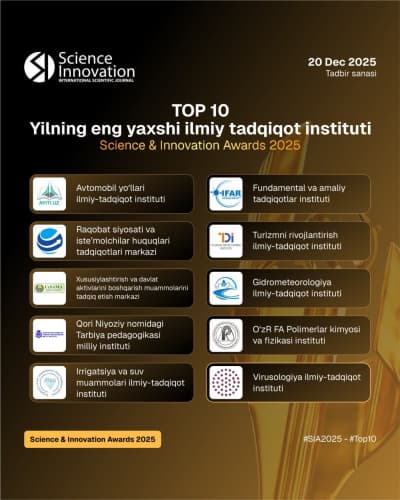
Environmental monitoring of the environment

About the activity
1. State monitoring of the natural environment - determining the level of pollution of the natural environment, assessing its ecological state, forecasting the consequences of negative processes, the state of biotic and abiotic components of the natural environment, their pollution and other harmful effects. (processes) of anthropogenic activity, a system of regular monitoring of changes in natural resources and the use of natural resources according to an approved program;
– monitoring objects - biotic and abiotic components of the natural environment and nature management, as well as natural, man-made and natural-man-made factors and sources of impact on the natural environment;
– environmental monitoring system - an interdependent system of regular observations consisting of state and industrial monitoring of the natural environment;
– Unified geographic information database of the environmental monitoring system – information on the state of the natural environment and sources of pollution through graphical visualization of geographic data and related information on the necessary objects in GIS - an electronic system for collecting, analyzing and storing based on technology;
– industrial monitoring of the natural environment - monitoring that is part of the environmental monitoring system, carried out by the relevant services of business entities that have a harmful effect on the natural environment;
– natural environment - natural and man-made objects, including atmospheric air, the ozone layer of the Earth, surface and ground water, land, underground lands, flora and fauna;
– environmental protection - a system of state and public measures aimed at preserving and restoring the natural environment, preventing the negative impact of economic and other activities on the natural environment and eliminating their consequences;
– background monitoring - at stationary monitoring points (posts) located in protected natural areas, far from industrial and economic activities, in areas with minimal human intervention, according to the level of presence of pollutants in all environmental objects) long-term. - conducting urgent systematic observations;
– specially authorized government agencies - government bodies that carry out state monitoring of the natural environment;
– a stationary observation point (post) - a plot of land that includes equipment and facilities, including automatic stations, intended for regular sampling of atmospheric air, surface and groundwater and subsequent chemical analysis, the surrounding complex, located in selected locations based on a preliminary study of the state of the natural environment and sources affecting it.
2. Activities on state monitoring of the natural environment in accordance with Article 28 of the Law of the Republic of Uzbekistan "On Nature Protection" and the Cabinet of Ministers of the Republic of Uzbekistan "On Improving the System of State Monitoring of the Natural Environment". in the Republic of Uzbekistan" will be carried out on the basis of the "Regulation on State Monitoring of the Natural Environment in the Republic of Uzbekistan", approved by the decision of PKM-737 dated September 5, 2019.
A system of state environmental monitoring will be created on the territory of the Republic of Uzbekistan for the purpose of monitoring, recording, assessing and determining the prospects of the natural environment and its resources.
Monitoring of the state of the natural environment, the use of natural resources is carried out by specially authorized bodies, as well as enterprises, organizations and institutions whose activities worsen or may worsen the state of the natural environment.
Environmental monitoring on the territory of the Republic of Uzbekistan is carried out by the National Committee on Ecology and Climate Change of the Republic of Uzbekistan, the Ministry of Water Resources, the Ministry of Health, the Ministry of Geology and Mineral Resources and Land Resources. Geodesy, cartography and the state cadastre are carried out by the Ministry and the center of the hydrometeorological service.
In particular, the National Committee of Ecology and Climate Change of the Republic of Uzbekistan (hereinafter referred to as the Committee of Ecology) monitors sources of air pollution, surface waters and soil, and the State Committee on Ecology monitors flora and fauna in protected natural areas under the control of Mita.
Hydrometeorological Service Agency - on air pollution, surface (natural watercourses) water pollution, soil pollution and background monitoring;
Ministry of Water Resources of the Republic of Uzbekistan - on monitoring the qualitative composition of water in collector-drainage and melioration wells of main collectors;
Ministry of Agriculture of the Republic of Uzbekistan - on agricultural land pollution, as well as monitoring vegetation of natural pastures;
Ministry of Geology and Mineral Resources of the Republic of Uzbekistan - on monitoring groundwater pollution and hazardous geological processes;
Forestry Agency of the Republic of Uzbekistan - on monitoring flora and fauna on forest fund lands, as well as on other sites under the jurisdiction of the Forestry Agency;
Is carried out by the Ministry of Health of the Republic of Uzbekistan on sanitary and hygienic monitoring of the natural environment.
State monitoring of the natural environment will consist of the following:
monitoring of pollution sources (emissions) of atmospheric air, surface waters and soils;
– monitoring of atmospheric air pollution;
– monitoring of surface water pollution;
– control of the qualitative composition of collector-drainage waters;
– monitoring of groundwater pollution;
– monitoring of hazardous geological processes;
– monitoring of land pollution;
– monitoring of flora and fauna;
– sanitary and hygienic monitoring of the environment;
– background monitoring.
Work on state monitoring of the natural environment is carried out in accordance with the program of state monitoring of the natural environment, which is approved by the Cabinet of Ministers and reviewed at least once every 5 years.
State monitoring of the natural environment is organized specifically and includes regular monitoring of the state of the natural environment (quantitative and qualitative measurements, sampling, analysis, observation at points, photography, inspection, research and remote monitoring) and:
– the state of sources of impact on the natural environment;
– physical, chemical, geological and biological processes and factors of impact on the natural environment;
– the state of pollution of atmospheric air, surface and ground water, soils and the geological environment;
– includes the identification, assessment and forecasting of changes in the state of flora and fauna, their change (transformation) under the influence of various anthropogenic and natural factors.
Assessment of the state of the natural environment by summarizing and analyzing successive (periodic and current) observations, the direction and intensity of changes, comparing the obtained indicators with the standards of the qualitative state of the natural environment and possible ecological environment is carried out taking into account the damage.
A unified geoinformation database of the natural environment monitoring system will be formed on the basis of the analytical management center specializing in the field of environmental protection under the National Committee on Ecology and Climate Change of the Republic of Uzbekistan. The center ensures the collection, storage, processing and analysis of information provided by specially authorized government agencies and business entities implementing departmental environmental monitoring.
The analytical management center specializing in environmental protection under the National Committee on Ecology and Climate Change of the Republic of Uzbekistan:
Through the unified geoinformation database of the state environmental monitoring system:
– organizes information interaction with all departmental information systems;
– combines and analyzes generalized information on the level of environmental pollution and the use of natural resources;
– supervises the implementation of state environmental monitoring programs, the development and generalization of proposals for their correction;
– predicts changes in the environmental situation within the framework of the republican and administrative-territorial structure, assesses the damage caused to the natural environment as a result of anthropogenic activity;
– provides information on environmental management, natural resource protection and environmental monitoring;
– informs the population and the public about the environmental situation.


